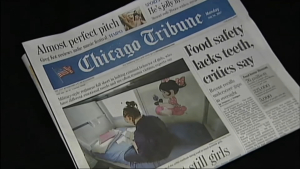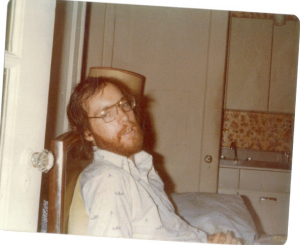 I have been telling journalists for a quarter century that they needed a new business model.
I have been telling journalists for a quarter century that they needed a new business model.
Stop worrying about advertising, I said in 1996. Think about earning commissions from your business partners.
Someone finally listened. Ric Elias runs Red Ventures, doing precisely what I said back then needed to be done.
I could point the way, but I couldn’t do it. I prefer writing stories to anything, especially running a business. I should have taken the advice of the late George Heitz, who at my first j-school lecture in 1977 said that Northwestern had a business school right around the corner.
No regrets. I’ve had a good career. But I’m proud to bursting over what Elias has done, in the Charlotte suburb of Fort Mill, SC. He has focused on consumer lifestyle brands, buying them slowly as their ad-based business models collapsed. Healthline is now Red Ventures. So is Lonely Planet. So are ZDNet and CNet, where many of my old colleagues with the Internet Press Guild still work.
Elias leaves the writers alone. Good journalism draws readers and builds communities. That’s always been its main function. The question is how to capitalize on that.
Red Ventures seeks commissions on credit cards, on services, on products sold on Amazon. The New York Times, in a dismissive piece about it, talked at length about Elias’ life story, the early days of using telemarketing, a supposed dependence on credit cards for revenue.
 But, having figured out his business model using service journalism and lifestyle brands, Elias is now ready to take the next step. That is, serving people based on their industry or location. He can wait until the private equity idiots wring all the costs out of papers like the Chicago Tribune, then pick those titles up for pennies on the dollar. He can then focus on collecting commissions from local businesses, from car dealers or small retailers.
But, having figured out his business model using service journalism and lifestyle brands, Elias is now ready to take the next step. That is, serving people based on their industry or location. He can wait until the private equity idiots wring all the costs out of papers like the Chicago Tribune, then pick those titles up for pennies on the dollar. He can then focus on collecting commissions from local businesses, from car dealers or small retailers.
In the end journalism remains what it always was. You’re aggregating an audience, based on its location, an industry, or its lifestyle. You’re serving the audience’s hunger for connection through editorial. Then you’re pointing them toward products and services they’ll love. The connection to commerce is a little tighter here, but it was always there.
After spending my entire working life watching my beloved journalism industry collapse, the business is ready to grow again.










